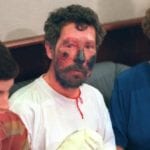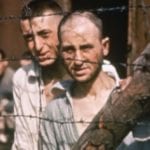 Music
Music  Music
Music  History
History 10 Less Than Jolly Events That Occurred on December 25
 Weird Stuff
Weird Stuff 10 Funny Ways That Researchers Overthink Christmas
 Politics
Politics 10 Political Scandals That Sent Crowds Into the Streets
 Weird Stuff
Weird Stuff Ten Bizarre Facts About The Doge Meme
 Our World
Our World 10 Ways Your Christmas Tree Is More Lit Than You Think
 Movies and TV
Movies and TV The 10 Coolest Stars to Set Sail on The Love Boat
 History
History 10 Things You Didn’t Know About the American National Anthem
 Technology
Technology Top 10 Everyday Tech Buzzwords That Hide a Darker Past
 Humans
Humans 10 Everyday Human Behaviors That Are Actually Survival Instincts
 Music
Music 10 Surprising Origin Stories of Your Favorite Holiday Songs
 History
History 10 Less Than Jolly Events That Occurred on December 25
 Weird Stuff
Weird Stuff 10 Funny Ways That Researchers Overthink Christmas
Who's Behind Listverse?

Jamie Frater
Head Editor
Jamie founded Listverse due to an insatiable desire to share fascinating, obscure, and bizarre facts. He has been a guest speaker on numerous national radio and television stations and is a five time published author.
More About Us Politics
Politics 10 Political Scandals That Sent Crowds Into the Streets
 Weird Stuff
Weird Stuff Ten Bizarre Facts About The Doge Meme
 Our World
Our World 10 Ways Your Christmas Tree Is More Lit Than You Think
 Movies and TV
Movies and TV The 10 Coolest Stars to Set Sail on The Love Boat
 History
History 10 Things You Didn’t Know About the American National Anthem
 Technology
Technology Top 10 Everyday Tech Buzzwords That Hide a Darker Past
 Humans
Humans 10 Everyday Human Behaviors That Are Actually Survival Instincts
10 Amazing Celebrities Who Survived The Holocaust
While millions perished under the Nazi regime throughout Europe, thousands survived to tell their stories and help to prosecute the cruel perpetrators of the Holocaust who escaped at the end of the war. While every survivor has their story to tell, some went on to lead successful lives in the public eye as politicians, writers, playwrights, producers, and actors.
While society chose to celebrate these remarkable few, their work and contributions to the world of entertainment and justice have helped preserve the history of what happened to them, hopefully ensuring history never repeats itself. Because it would be inappropriate to rank these people, one way or the other, they are presented here in alphabetical order, so here are ten amazing celebrities who survived the Holocaust.
See Also: 10 Amazing Ways People Survived The Holocaust
10 Robert Clary—Singer, Writer, & Actor

Robert Clary was born Robert Max Wilderman in Paris, France, back in 1926. He began a life in showbusiness early on, having started singing professionally on French radio at the age of 12. By 1942, he was deported to the Nazi concentration camp at Ottmuth, Poland. He didn’t remain there for too long, and soon after his forearm was tattooed “A5714,” he was sent to Buchenwald concentration camp where he was made to sing for a gathering of SS soldiers every other Sunday. “Singing, entertaining, and being in kind of good health at my age, that’s why I survived. I was very immature and young and not really fully realizing what situation I was involved with … I don’t know if I would have survived if I really knew that.”
Clary remained at Buchenwald until the camp was liberated on April 11, 1945. He was the lone survivor of his 13 family members sent to the camps. Twelve of whom were taken to Auschwitz where they were murdered. After the war ended, Clary returned to Paris, where he learned that three of his siblings survived the occupation of France, and it wasn’t long before he returned to showbusiness. He continued singing and gained a great deal of worldwide recognition. He toured the United States where he met Eddie Cantor, the man who would become his father in law. He acted in films and television and is probably best known for his work on Hogan’s Heroes where he played Corporal Louis LeBeau.[1]
9 Meyer Gottlieb—Producer
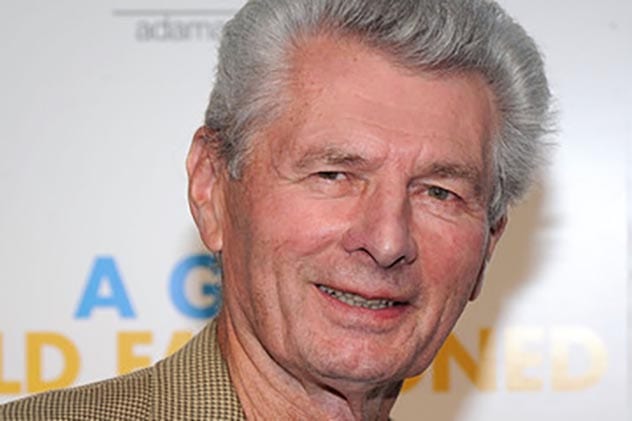
Meyer Gottlieb was born shortly after Germany invaded Poland in 1939. Though his memories of his early childhood during the war are limited, the ones he has retained are unpleasant, to say the least. “I have no memories of joyous events. The first real memories of a childhood I have are after I came to America.” The Gottlieb family fled their home as the Germans advanced, and they found themselves retreating with the Russian military until finally winding up in a Ukranian labor camp. When he was only three or four-years-old, he remembers his father wrapping his infant brother in a tallis before carrying him outside the labor camp so he could give him a proper burial.
Another vivid memory that haunts Gottlieb was that of his father, who was an officer in the Polish Army, getting into a black bus to fight the Germans towards the end of the war. He never saw him again. Four years after arriving in Ukraine, the war came to an end, and Gottlieb and his mother were expelled to a displaced persons camp in the U.S. sector of occupied Germany. Eventually, Gottlieb emigrated to the United States, where he produced films, including hits like Master and Commander and The Secret Life of Walter Mitty. He was eventually elevated to become the president of Samuel Goldwyn Films.[2]
8 Imre Kertész—Novelist
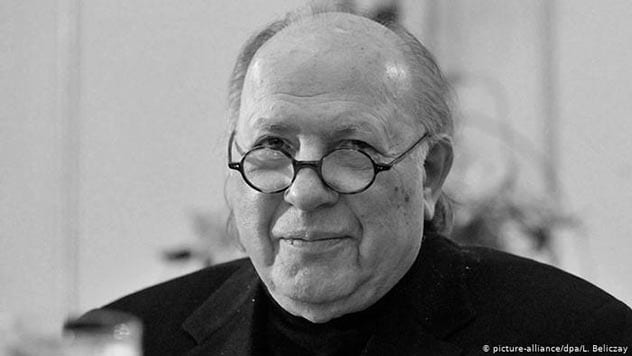
Imre Kertész was born in Budapest in 1929, where he later attended boarding school in a segregated class consisting entirely of Jews. In 1944, he was rounded up with other Hungarian Jews and deported to the Auschwitz concentration camp at the age of 14. He didn’t remain at Auschwitz, as he was transferred to Buchenwald, where he claimed to be 16-years-old, and a worker. He said this to avoid instant extermination, which would have been his fate had the Nazis known he was only 14. He managed to survive until Buchenwald was liberated the following year. When the war ended, he returned to Budapest, where he finished high school in 1948.
He began working as a journalist for several years, but after the paper he was working for adopted the communist party line, he lost his job. He continued to write, mostly doing freelance jobs while working on his novels, the most well-known of which, Fetelessness, revolves around the experiences of a 15-year-old boy trapped in the concentration camps of Buchenwald, Auschwitz, and Leitz. That work was adapted into a film based on Kertész’s script. Throughout his life, he wrote 17 books and received numerous honors. In 2002, he was awarded the Nobel Prize in Literature “for writing that upholds the fragile experience of the individual against the barbaric arbitrariness of history.”[3]
7 Ivan Klíma—Playwright
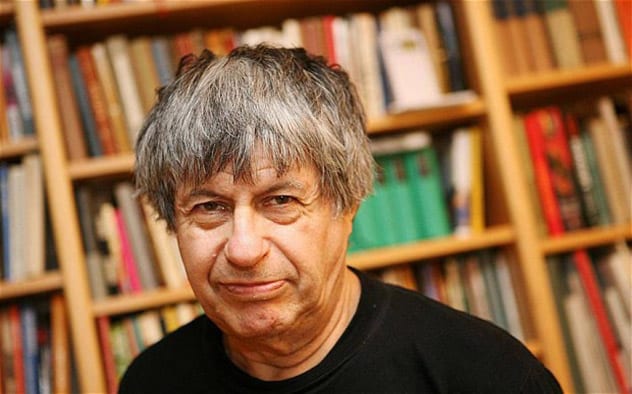
Ivan Kauders was born in Prague in 1931, where he grew up without any issues, not even knowing his parents had Jewish ancestry. Neither were observant Jews, but that didn’t matter when the Nazis came to Czechoslovakia in 1938. In November 1941, his father was ordered to a concentration camp at Theriesenstads; he and his mother followed the next month. The family remained in the camp until it was liberated by the Red Army in May 1945. Their survival was remarkable, as Theriesenstads was a holding camp, which regularly shipped Jews to Auschwitz, but they survived there for four years.
Soon after the war came to an end, the terror of the occupying Nazi regime was replaced by the proxy Soviet control in the form of the Czech Communist regime, of which Klima became a member. Klima’s experiences in the concentration camp flowed into his writing, and he has described this time as being “the liberating power that writing can give.” Throughout his life, Klima worked as a prolific playwright, and as a professor at the University of Michigan. He has been recognized for his work with the Magnesia Litera award, the Franz Kafka Prize, and many other significant honors.[4]
6 Curt Lowens—Actor
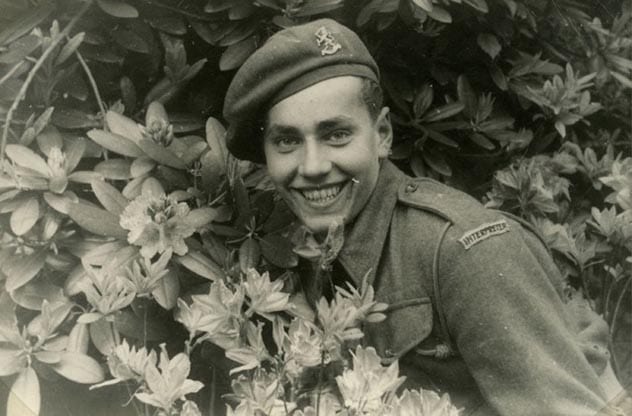
Curt Lowens (originally, Löwenstein) was born in Olsztyn, Poland in 1925, and as the Nazis came to power in Germany, he and his family moved to Berlin. They hoped to find shelter among the large Jewish community there, but it wasn’t long before the Nazis forced the family to emigrate to the Netherlands. They planned to emigrate from there to the United States, but the day they were meant to depart, the Nazis invaded. For the first two years of the occupation, the Löwensteins managed to avoid deportation to Auschwitz, but eventually, Curt and his mother were rounded up and sent to Westerbork, a transition concentration camp in 1943. They were released through his father’s connections, but the family subsequently had to go into hiding.
For the next two years, the family remained in hiding but worked actively with a network of Dutch rescuers to save as many people from the Nazis as they possibly could. Under false identities, Lowens and his mother aided in the rescue of 150 Jewish children. He also saved two downed American Army Air Corpsmen, which earned him a commendation from General Dwight D. Eisenhower. After the Netherlands was liberated, he aided the Allies as a translator and helped capture Nazi leaders remaining in the area. Soon after the war ended, he and his family emigrated to the United States, where he studied acting at the Herbert Berghof Studio in New York. Over the course of his long career, Lowens starred in more than 100 films and television shows.[5]
5 Branko Lustig—Producer
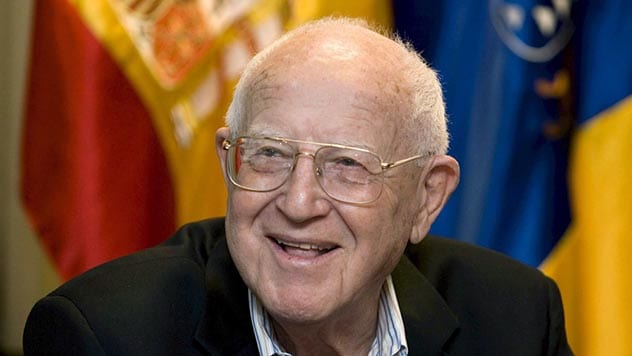
Branko Lustig was born to a Croatian Jewish family in the former Yugoslavia, now Croatia, in 1932. While his parents weren’t religious, his grandparents were, and they attended synagogue regularly. Lustig grew up in relative peace until World War II began, and it wasn’t long before he was taken as a young boy to the Auschwitz and Bergen-Belsen concentration camps. The vast majority of his family was killed in various death camps across Europe, though his mother did survive, and the two reunited after the war came to an end. When he was finally liberated, he was infected with Typhoid and weighed only 66 lbs., and he credited his survival to a German officer who came from his same neighborhood. The man knew who his father was, and because of this connection, he helped Lustig survive.
When the war came to an end, Lustig regained his health and began a film career in 1955. He worked for a Zagreb-based state-owned film production company where he worked on several projects. Eventually, he went on to work on 1971’s The Fiddler on the Roof and many more movies. He received his first Academy Award for his work on Schindler’s List, and his second came for his work on Gladiator. He’s worked as a producer and executive producer on numerous films throughout his long career and remained a well-respected and influential man in Hollywood until his death in 2019.[6]
4 Roman Polanski—Director
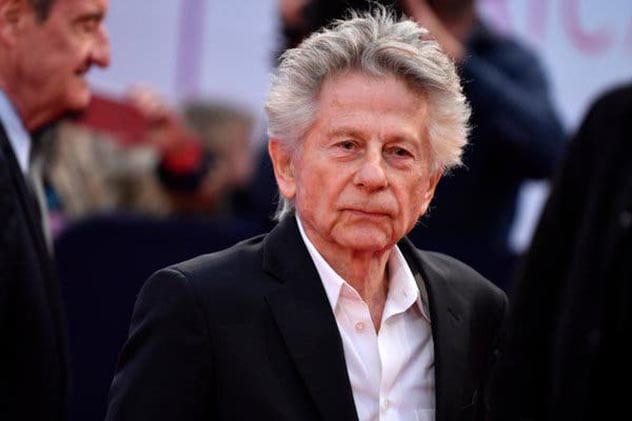
Roman Polanski was born in Paris to a Jewish family in 1933. The family relocated to Kraków in 1936, which is where they remained when Germany began its invasion of Poland. The city was soon occupied, and the Pola?skis were rounded up and forced to live in the Kraków Ghetto. He began primary school at the age of six, but only remained a few weeks before “all the Jewish children were abruptly expelled.” Soon after, all Jews were required to wear armbands with a blue Star of David, so they could be easily identified. It wasn’t long before the Germans began deporting Jews from the Ghetto, and he watched as both of his parents were sent to concentration camps.
Pola?ski managed to escape the Ghetto in 1943 and was able to survive the remainder of the war with the help of Polish Roman Catholics. He memorized Catholic prayers so he could pass as Catholic, but his ignorance of the Catechism outed him to those unwilling to shelter a Jew for fear of death. Later, he roamed the Polish countryside, avoiding German soldiers when he could, and he survived the war. When the war ended, he began working in films in Poland and eventually became an Academy Award-winning director. These days, he’s mostly known for his work in Hollywood and his arguably criminal affairs with young girls, which keeps him from ever returning to the United States.[7]
3Leon Prochnik—Screenwriter

Leon Prochnik was born in 1933 to a Jewish family who owned the second-largest chocolate factory in Poland. For most of his youth, he enjoyed a privileged existence, but by 1939, the family was forced to flee Nazi-occupied Poland. His father was warned via telegram by one of his workers that the Nazis were looking for him, and despite being on vacation from Kraków, they never returned. He and his family kept on the run for more than a year and a half, which saw them travel through Lithuania, Russia, Japan, Canada, and finally, the United States. Emigrating to the U.S. at that time was difficult, and the family was detained for some time at U.S. Customs. “America would not let Jewish refugees in at that point; it was not a very proud moment in America’s history.”
He later said of his first night after finally settling in New York, “It was the first night I remember sleeping without my fists being clenched.” After the war ended, and life began to return to a sense of normalcy, Prochnik received an education and began working in film as a writer and editor. His most notable work was on the film Child’s Play, for which he wrote the screenplay. He has also directed, edited, and produced shorts.[8]
2 Ruth Westheimer—Sex Therapist
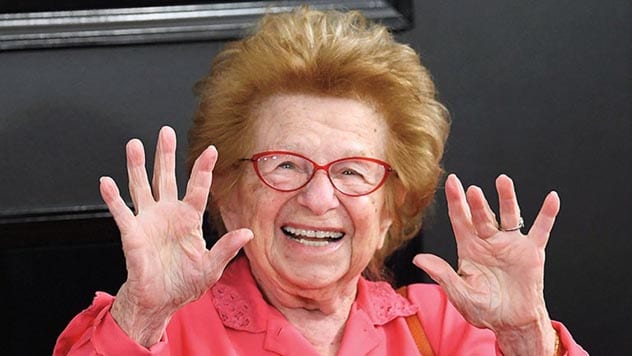
Karola Ruth Siegel was born in June 1928 in Wiesenfeld, Germany, to a family of Orthodox Jews who taught her Judaism at an early age. She attended synagogue regularly with her father, but in January 1939, she was sent to Heiden, Switzerland, to live in an orphanage so as to avoid the horrors of the oncoming war and Nazi regime. Before this happened, she watched as her father was taken during the Night of Broken Glass in 1938. She made it to the orphanage at the age of 11, where she became a caretaker to the younger children. During this time, she wasn’t allowed to attend school, but another orphan snuck books to her at night so she could continue her education.
While in Switzerland, her parents succumbed to the Nazi death machine; her father was killed at Auschwitz in 1942, and her mother was killed sometime during the war, but she never learned any specific information about her death. She later emigrated to Palestine at the age of 17 and joined the Haganah in Jerusalem as a scout and sniper. She was wounded in the 1947-49 Palestine war, and eventually, she moved to France before finally settling in the United States, where she became a renowned sex therapist who is best known for her radio show, Sexually Speaking. Most know her these days simply as Dr. Ruth, and as of late 2019, the 91-year-old was still busy working with appearances on The View, Late Night with Seth Meyers, and other shows.[9]
1 Simon Wiesenthal—Writer & Nazi Hunter
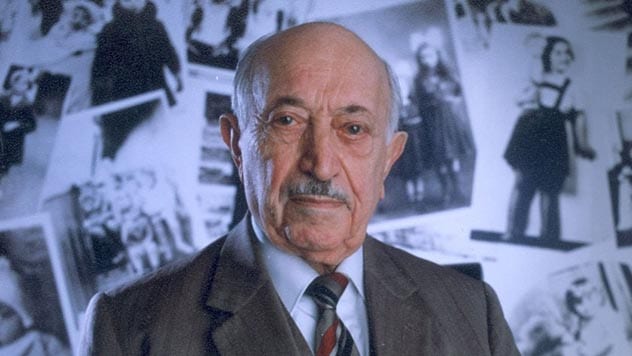
Simon Wiesenthal was born on the last day of 1908 in an area of what is now known as Ternopil Oblast in Ukraine. His family had already emigrated from the Russian Empire three years earlier to escape the violent pogroms targeted against the Jewish community. His father was killed in action on the Eastern Front of World War I in 1915, which left the remainder of his family, including Simon, his younger brother Hillel, and his mother, Rosa. Simon graduated high school in 1928 and spent the next decade holding a supervisory position in a factory in Lwów until 1939. Eventually, Lwów was annexed by the Soviets before falling to German occupation in 1941.
Wiesenthal was first placed in the Lwów Ghetto before he and his wife were transferred to the Janowska concentration camp. Over the next few years, he was nearly killed several times, escaped the liquidation of the camp, was later captured and returned once more, and finally, the camp was liberated by invading Soviet forces, but he was forced on a death march few survived to Buchenwald, then Mauthausen concentration camp. He barely survived until liberation in May 1945. Through the course of the Holocaust, the couple lost a total of 89 relatives. When the war ended, he became a Nazi hunter who was a key figure in the apprehension of Adolph Eichmann in 1959. He also wrote extensively and crafted numerous stories and memoirs, many of which revolved around the events of his life.[10]
For more lists like this, check out 10 Havens During The Holocaust, and 10 Inspiring Stories Of True Love From The Holocaust.



